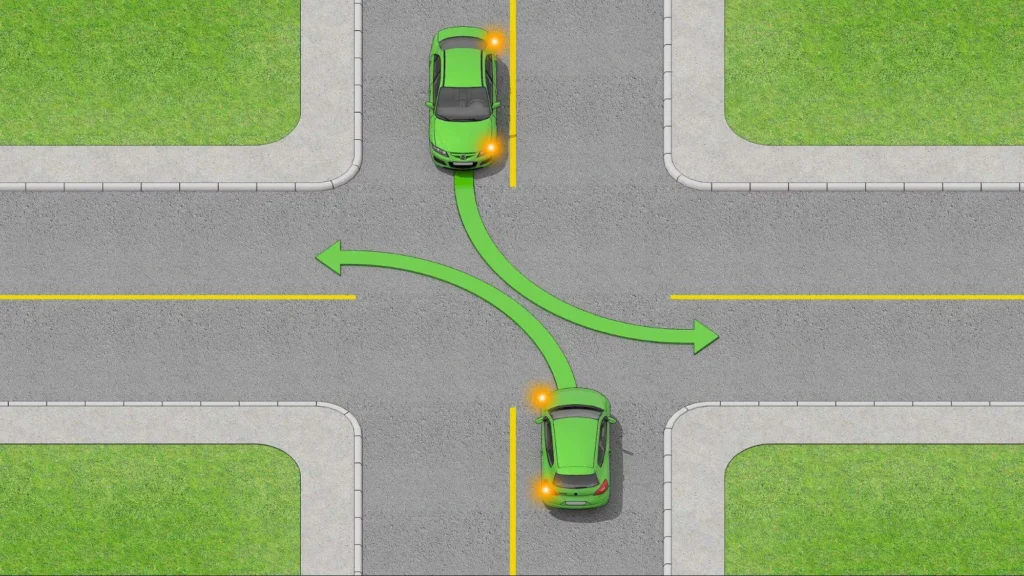The road safety challenge presented by uncontrolled intersections is unique.
These are places where there are no traffic signs or stop signs.
Uncontrolled intersections are important.
The absence of traffic controls means that drivers must be more aware of their surroundings. When drivers do not exercise caution or adhere to the established rules of right-of-way, uncontrolled intersections can cause confusion, misinterpretation, and accidents.
Uncontrolled intersections are characterized by the lack of clear directions. This means that drivers must rely on traffic rules and be aware of their surroundings. Drivers must work together to understand the uncontrolled intersection rules in the absence of stop signs or traffic signals. It is a driving rule that all drivers must yield to cars already in the intersection, or those approaching on the right. The application of the rule relies on the assumption all drivers have a similar understanding. This can lead to ambiguity or even dangerous miscalculations.
The dynamics of an uncontrolled intersection also require drivers to be more attentive. Uncontrolled intersections are not like controlled intersections where traffic lights provide a predictable and structured environment. Instead, drivers must rely on observation skills to determine the intent of the other driver. It is important to avoid complacency and take an active role in the driving environment. In the absence of obvious signals, non-verbal communication between drivers is more important. This emphasizes the importance of eye contact, hand gestures, and other visual clues to build mutual trust and avoid potential conflict.
Defensive driving is especially important when navigating uncontrolled intersections. The concept of defensive driving is a proactive, vigilant, and alert approach when navigating on the road. It involves anticipating hazards and taking preventive measures to minimize them. Defensive driving at uncontrolled intersections is more than a recommendation. It’s a mindset. This involves being aware of the other driver’s actions, being prepared to deal with unexpected situations, and prioritizing your safety above all else. In the absence of specific traffic control systems, drivers must assume a collective responsibility to maintain a safe flow of traffic.

In addition, uncontrolled intersections require drivers to be courteous and cooperative. A cooperative approach is essential in the absence of right-of-way indicators. This will reduce accidents and confusion. It is important to be willing to yield when needed, to communicate intentions, and to exercise patience to achieve a harmonious and smooth passage through an intersection. This cooperative approach is only successful if drivers are committed to prioritizing safety. They must also recognize that the lack of rules doesn’t mean a “free-for-all” scenario but rather a sense of increased responsibility.
Uncontrolled intersections are further complicated by the variability of road infrastructure and design. Uncontrolled intersections in urban areas may lack pavement markings or signage and rely on the drivers’ cooperation. In rural areas, there may be poor visibility at uncontrolled intersections due to vegetation, terrain, or insufficient lighting. To negotiate uncontrolled intersections, drivers must be flexible and adaptable. They should also adjust to the environment and their behavior.
It is impossible to overstate the importance of education in helping us overcome the problems of intersections without control. The driver education program must focus on the skills and mentality required to safely navigate intersections. It is important to teach drivers the right-of-way principles and reinforce defensive driving. These educational campaigns are complemented by public awareness campaigns that highlight the characteristics of intersections without control and promote a culture where drivers drive with caution and consideration.
Technology advancements offer opportunities for safety enhancement despite the difficulties posed by intersections that are not controlled. Sensors and cameras can be used to provide information in real-time about vehicles and their movements at intersections that are not controlled. The technology provides drivers with an extra layer of awareness, alerting them to possible conflicts and improving navigation. It is important to find a balance in the use of technology and fundamental awareness and skills that drivers need to be able to successfully navigate intersections without control.
Conclusion
Uncontrolled intersections present a set of unique challenges that require an integrated approach to maintain safety and efficiency. In the absence of traffic control devices, road users must rely on common norms and practices, such as defensive driving, increased awareness, and cooperation. To successfully negotiate uncontrolled intersections, drivers must move away from passive driving to a more proactive approach. In a world where traffic is constantly changing, it’s important to be aware of the complexity of uncontrolled junctions and to integrate technology judiciously.
